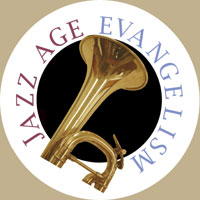

|
Read more on
|
Intended originally only as a temporary summer building, the Tabernacle had to be flexible in its physical structure as well as in its program. The building was square-shaped (170 feet by 170 feet), with thin tile and wooden walls replacing the original canvas ones. Inside, the huge platform at the front, big enough for a choir of hundreds and two pianos, dominated the auditorium. A sounding board provided adequate acoustics and simple wooden benches served as pews. In the winter, a dozen coal stoves provided heat. Offices and activity rooms lined the east and west sides. A cafeteria was later added to accommodate those who came from far away to spend the day at the church's programs. In many ways, Rader's Tabernacle was a forerunner of the megachurches of recent years. Like them, the Tabernacle had a huge congregation including many people who had never been part of a traditional congregation. They were drawn by a charismatic preacher who with his staff carefully studied their interests and needs. A network of small group and special programs met the nurture and fellowship needs of the people and all were mobilized in efforts to support evangelism overseas and outreach in their own neighborhoods and city.